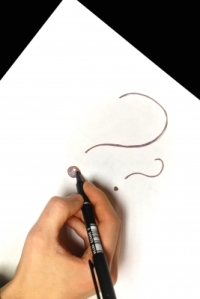Are you new to freelance writing? Do you feel continually “blocked” (by writer’s block) from writing that first article or blog post draft? Here are some ideas I have culled from my collection of books and writer’s blogs to get us both started. It begins with an idea – honed into a topic – then crafted into a great article.
Finding Ideas
Ideas are absolutely everywhere. Are you reading this on a laptop, a desktop, on your mobile? Any one of those devices could become the topic of an article. Look down at your feet; are you wearing shoes, slippers, combat boots? Do you have a favorite food, play sports, volunteer for a charity? Ideas are all around you. You can sleuth your own personal history for ideas such as your hometown, your school, your family lineage, your job. But these are only broad ideas and to become a topic, they need a focus.
Turning Ideas into Topics
You have a great idea – but what can write about it? Ask yourself what is special, compelling or unique about it; who would want to know; and why would they want to know it? Answering these questions is crucial for you to write effectively about your topic. Of these questions, knowing your audience is the important first step. Let it frame and focus your article and here is why: your readers will want to read what you have written because it will be relevant to them. If you fail to grab and hold their attention, they will skim right by your article in favor of one that does. My advice – write to and for your reader.
Researching Your Topic
You may or may not need to research your topic to glean and support the main points you want to share about your topic. If you do need to research it, do not rely purely on Google and sites like Wikipedia: everyone can do that and you want to be unique. Consider visiting the library, art gallery, or museum, etc. – either in person or on the web. Also, interviews can be as simple as a quick conversation with an expert on the topic of your choice. If a phone call is not possible, try emailing your question, but be brief, polite and to the point. Asking one or two pointed questions is fair; asking half a dozen in vague and rambling fashion is not.
Writing Your Article
There are many ways to turn your thoughts into an article. Tried and true is the basic outline you may have learned in school. It consists of an introduction, three (or more) main points, each supported by three (not usually more) sub-points that expand on, explain and support the main point, and a conclusion.
The number of main points will depend on the complexity of the topic and the length of your article. In general, each point will become a paragraph and each paragraph will have about four sentences incorporating the sub-points. More specifically, the structure of your article is based on its intended venue. If you want to sell it to a specific magazine, read that magazine and mimic how it structures its articles. Finally (if you have not already done so), write your title. Let the text of the article create it. Catchy is key here, you want to firmly grab your reader’s attention. Asking a provocative question is one great way to do it. A clever play on words is another.
Ready…Set…Write!
This should get you on your way to writing your first articles or blog posts. Can see the myriad of ideas around you in things, people and places that you may have never considered worth writing about? To whittle an idea down into topic form, answer a question that your intended read would ask about it, such as what is great, different, weird, funny (etc.) and why. Research your topic by digging a little deeper than just the first page of Google hits, and draft your article using a basic outline or magazine’s article style. Adding graphics (illustrations, charts, photos), adopting a specific “voice” and selling your article are topics for later posts.
I hope you found this information useful and welcome your comments. What method(s) do you use to break the block and get writing?


